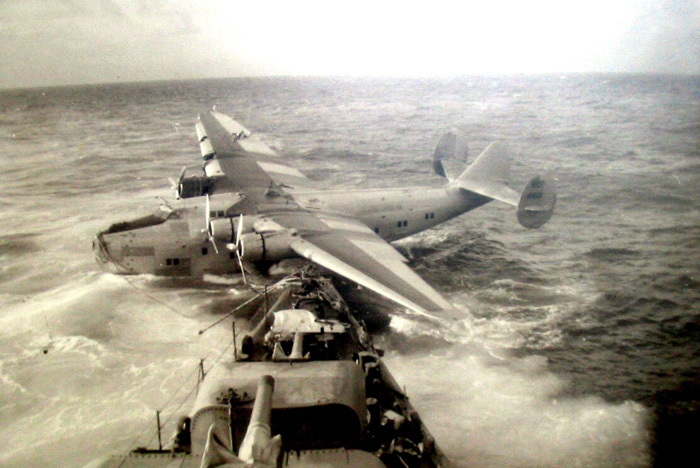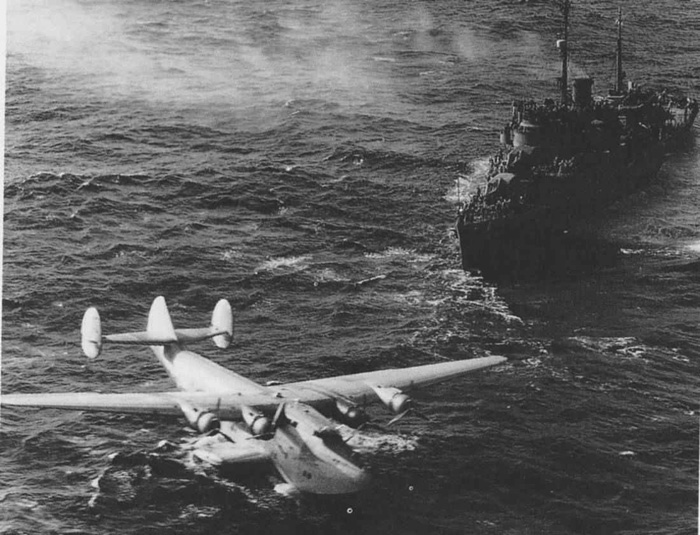The very first Boeing B314 to see the light of day was NC 18601, later christened Pan Am's Honolulu Clipper.

It was almost midnight several hundred miles east of Hawaii on the night of November 3rd, 1945 when Captain “Robbie” Robbins brought the big plane down to a masterful landing on a rough ocean surface. With two engines out, and losing altitude despite dumping fuel and cargo, he had little choice. All aboard were safe, and the aircraft was in good shape. Another Pan Am B-314, the California Clipper, was also en route to San Francisco not far behind, and took up an orbiting station above her stricken sister ship to help guide rescue vessels to the scene. Help soon arrived and passengers and crew were transferred without incident..
Engine repair attempts failed. The plane was put in tow by the USS Manila Bay, a navy escort carrier, but the tow rope parted. The attempt to save the clipper dragged on with the arrival of the USS San Pablo, a navy seaplane tender. With seas running high, another attempt to tow the big flying boat was made, but this time, the effort to secure a tow line resulted in damage to the plane when ship and plane collided.
It was now November 8th. Radioed instructions from the Navy Commandant in Hawaii sealed the fate of the Honolulu Clipper. She was now a hazard to navigation and after 30 minutes of target practice with 20mm cannon fire from the San Pablo standing a mile away, she sank to the abyssal plain of the Pacific three miles down.
Underwater Admiralty Service
Mark Allen, of the Underwater Admiralty Service (UAS) has been involved in locating the Clipper over the years. UAS is no stranger to the fascinating but very technically challenging job of recovering aircraft from underwater environments. In the past, the team has successfully participated in the retrieval of a submerged B-17 Flying Fortress and an A-20 Havoc. The recovery of the Honolulu Clipper is more challenging but a factor that favors its discovery is the current availability of the specialized vessels used for deep water maritime work.
Educated estimates suggest that the clipper likely took two to three hours to come to a relatively gentle landing three miles down on the bottom of the Pacific. Although damaged during her final hours afloat, she is very likely to be mostly intact. Seven decades lying in the cold, dark and oxygen-poor depths could have been relatively kind to the Boeing’s aluminum structure. One further factor favoring the hunt is that the sea bottom where she went down is relatively flat and free of underwater mountains and chasms that would hinder the search.
Finding and retrieving the iconic Honolulu Clipper won’t be easy, but may be within reach.




